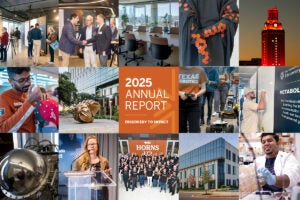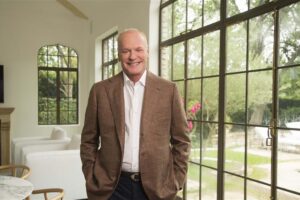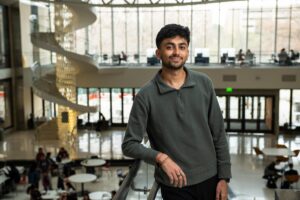Two satellites designed and constructed by students at The University of Texas at Austin will be launched on Nov. 19 on the first student-developed mission in which satellites will orbit and communicate with each other in real-time.
The two 60-plus pound satellites, named Emma and Sara Lily, were built by more than 150 students over seven years and at 7:24 p.m. Central Standard Time, will be launched into orbit from the Kodiak Launch Complex in Alaska. The satellites have the ability to separate from each other.
“It feels like the culmination of a lot of years of work and it’s very exciting and nerve-racking knowing that something you built with your own hands is flying into space,” said Sebastian Muñoz, an aerospace engineering graduate student at the Cockrell School of Engineering and manager of the project, known as FASTRAC.

The project is part of the University Nanosat-3 Program started in 2003 and sponsored by the Air Force with the goal of developing space technology that’s more affordable and accessible than the larger, costly satellites that are commonplace in space missions. In January 2005, The University of Texas at Austin bested 11 other universities and won the program’s grant-based competition to launch the FASTRAC satellites into space.
The two satellites, built by Cockrell School aerospace engineering graduate and undergraduate students, are each about the size of a car tire and will travel so fast that they circle the globe about every two hours. Students and their faculty adviser, Cockrell School of Engineering Professor Glenn Lightsey, won’t know if Emma and Sara Lily are performing their jobs correctly until Saturday at 6:30 a.m., when the satellites make their first orbit over Austin, some 400 miles above.
That moment will be filled with high expectations and anticipation for several reasons: First, if the satellites work as they should, they could open the door for more complex satellite missions that require real-time coordination between small satellites.
They could also help prevent tragedies like the Columbia space shuttle disaster, which, unknown to the shuttle’s crew, had a hole in the left wing that caused it to disintegrate upon reentry to the Earth’s atmosphere Feb. 1, 2003, killing all seven onboard.
“If they would have had the technology that could go outside the shuttle and inspect it, then the hole could have been discovered,” Lightsey said.
For the students, Friday’s launch is also the pinnacle of a project that’s spanned seven years and brought together students from across disciplines on the campus, many of whom have gone on to take jobs at NASA or in the space industry.
The students had to learn everything from managing a $250,000 hardware budget — a small amount compared to the millions typically spent on spacecraft missions — to developing new approaches, like building solar panels from scratch by using a turkey oven, to solve some of the more complex problems involved with building a satellite.
They also faced the challenge of losing one third of their work force to graduation each year and balancing long hours on the project, sometimes 80 a week, with their classes.
“I once came into the lab on Dec. 26 and it was full of students working on this project,” Lightsey said. “It’s really convinced me that UT is a great school and that we have great students. If you give them an opportunity, they’re going to make the most of it.”
Students worked in a small, two-room laboratory on campus to build the satellites mostly out of aluminum and titanium and they followed technical guidelines provided by NASA.

Texas engineering students are hopeful Emma and Sara Lily will perform as expected because they’ve passed multiple simulation tests at the Kirkland Air Force Base in Albuquerque, N.M., to make sure they can endure a launch into space. They won’t know until liftoff, however, and until they communicate with the satellites when they orbit over Austin on Saturday.
Lightsey said the project introduced students to field experience in a way no classroom can.
“It’s a great opportunity to get a look at what it feels like to be in an aerospace company or government agency, from design to building and testing it to seeing it launch in space,” Lightsey said. “As aerospace engineers, that’s what we live for, to see our stuff go into space.”
Students and faculty who have worked on the project will watch the launch via a live video feed on Friday at W.R. Woolrich Laboratories 410 on campus. Fans can follow FASTRAC’s status on Facebook and Twitter. Once the satellites have been launched, their latest reported location will be tweeted and uploaded to Facebook and the Spaceflight Now Web site.
About their names:
The satellites’ technical names are FASTRAC 1 and FASTRAC 2, but they were nicknamed Sara Lily and Emma, respectively, after two of the project’s team members had baby girls.
Sara Lily is named after the daughter of an engineering student, and Emma is named after the daughter of a team member with the Air Force Research Laboratory.



